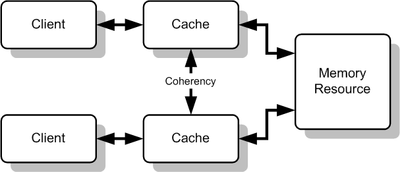User:Stchen: Difference between revisions
No edit summary |
|||
| Line 23: | Line 23: | ||
==Adaptive Coherence Protocol== | ==Adaptive Coherence Protocol== | ||
==References== | |||
<references /> | |||
Revision as of 03:03, 21 March 2012
Introduction to Update and Adaptive Coherence Protocols on Real Architectures
In parallel computer architectures, cache coherence refers to the consistency of data that is stored throughout the caches on individual processors or throughout the shared memory. The problem here is that we have multiple caches on multiple processors. When an update to a single cache makes changes to a shared memory, you will need to have all the caches be coherent on the value change. This is better shown below.

<ref></ref>
Update and Adaptive Coherence Protocols are used to solve the cache coherency problem.
According to Solihin textbook, page number 229, "One of the drawbacks of an invalidate-based protocol is that it incurs high number of coherence misses." What this means is that when a read has been made to an invalidated block, there will be a cache miss and serving this miss can create a high latency. To solve this, one can use a update coherence protocol, or an adaptive coherence protocol.
Update Coherence Protocol
Intro
Dragon Protocol
Adaptive Coherence Protocol
References
<references />